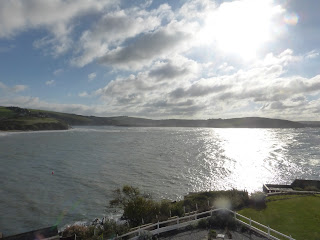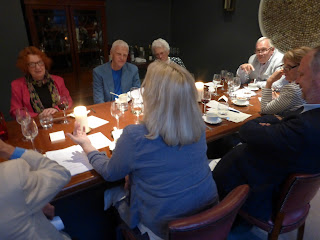I said yesterday that I found the west Cumbrian setting of my latest Lake District Mystery, The Dungeon House, to be quite inspiring. Not just the tiny Roman port of Ravenglass, but the dunes and lonely beaches of Drigg, and the coastal resort of Seascale,which lies in the shadow of a massive nuclear plant. I enjoyed so much the experience of wandering around that area, and trying to see it through the eyes of my characters.
There were other inspirations for the storyline. Some time ago, I became fascinated by a terrible type of criminal, the so-called "family annihilator" who kills members of his family and then himself. I found myself wondering what could lead anyone to do something so dreadful that it is almost beyond comprehension. I didn't take any particular real life case as my starting point, but the general (and, sad to say, increasing) trend of family annihilation cases. But it's not giving too much away to say that the story evolves into something different - there's a reasonably convoluted whodunit plot, with a number of clues planted where I hope not many readers will be looking...
Two residents of Ravenglass, Neil Anderson and Mark A. Pearce, kindly gave me a good deal of insight into the lives that might be led by two of my invented characters, and this was a huge help. Mark is an artist, as is Scott Durham in the story, but he's a much finer artist than Scott! I have become a big fan of his, and one of his wonderful works of art - its subject Ravenglass, what else? - now adorns the living room chez Edwards. One of the many unexpected bonuses of life as a crime writer.
But sometimes inspiration takes a curious form. The original idea came to me after I paid a visit to an Arts and Crafts house in Cheshire, a couple of years ago. It boasted a wonderful quarry garden, and I felt as soon as I saw it that it would make a wonderfully evocative setting for murder most foul. And two years on, I'm still of the same opinion. Here's hoping that readers agree...





































